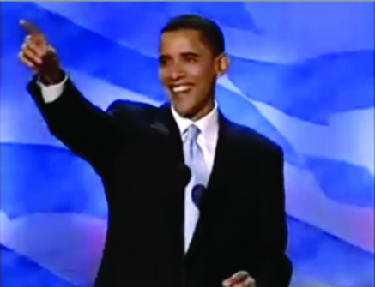| << Chapter < Page | Chapter >> Page > |
This is not to say the national conventions are no longer important, or that the national party organizations are becoming less relevant. The conventions, and the organizations that run them, still contribute heavily to a wide range of key decisions in the life of both parties. The national party platform is formally adopted at the convention, as are the key elements of the strategy for contesting the national campaign. And even though the media is paying less attention, key insiders and major donors often use the convention as a way of gauging the strength of the party and its ability to effectively organize and coordinate its members. They are also paying close attention to the rising stars who are given time at the convention’s podium, to see which are able to connect with the party faithful. Most observers credit Barack Obama’s speech at the 2004 Democratic National Convention with bringing him to national prominence.
While both political parties use conventions to help win the current elections, they also use them as a way of elevating local politicians to the national spotlight. This has been particularly true for the Democratic Party. In 1988, the Democrats tapped Arkansas governor Bill Clinton to introduce their nominee Michael Dukakis at the convention. Clinton’s speech was lampooned for its length and lack of focus, but it served to get his name in front of Democratic voters. Four years later, Clinton was able to leverage this national exposure to help his own presidential campaign. The pattern was repeated when Illinois state senator Barack Obama gave the keynote address at the 2004 convention ( [link] ). Although he was only a candidate for the U.S. Senate at the time, his address caught the attention of the Democratic establishment and ultimately led to his emergence as a viable presidential candidate just four years later.

Should the media devote more attention to national conventions? Would this help voters choose the candidate they want to vote for?
Bill Clinton’s lengthy nomination speech in 1988 was much derided, but served the purpose of providing national exposure to a state governor. Barack Obama’s inspirational speech at the 2004 national convention resulted in immediate speculation as to his wider political aspirations.
One of the first challenges facing the
party-in-government , or the party identifiers who have been elected or appointed to hold public office, is to achieve their policy goals. The means to do this is chosen in meetings of the two major parties; Republican meetings are called party conferences and Democrat meetings are called party caucuses. Members of each party meet in these closed sessions and discuss what items to place on the legislative agenda and make decisions about which party members should serve on the committees that draft proposed laws. Party members also elect the leaders of their respective parties in the House and the Senate, and their party whips. Leaders serve as party managers and are the highest-ranking members of the party in each chamber of Congress. The party
whip ensures that members are present when a piece of legislation is to be voted on and directs them how to vote. The whip is the second-highest ranking member of the party in each chamber. Thus, both the Republicans and the Democrats have a leader and a whip in the House, and a leader and a whip in the Senate. The leader and whip of the party that holds the majority of seats in each house are known as the majority leader and the majority whip. The leader and whip of the party with fewer seats are called the minority leader and the minority whip. The party that controls the majority of seats in the House of Representatives also elects someone to serve as Speaker of the House. People elected to Congress as independents (that is, not members of either the Republican or Democratic parties) must choose a party to conference or caucus with. For example, Senator Bernie Sanders of Vermont, who originally ran for Senate as an independent candidate, caucuses with the Democrats and ran for the presidency as a Democrat. He returned to the Senate in 2017 as an independent.

Notification Switch
Would you like to follow the 'American government' conversation and receive update notifications?